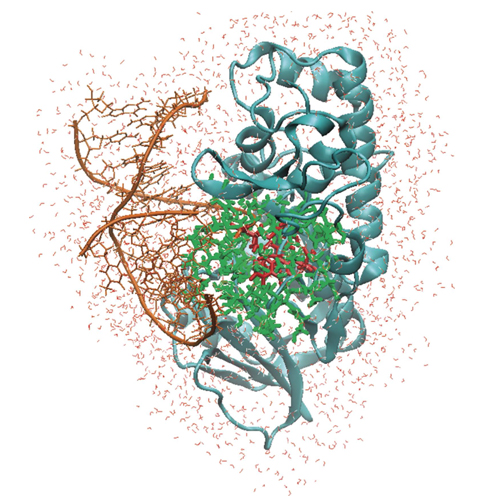A Base-Independent Repair Mechanism for DNA Glycosylase—No Discrimination Within the Active Site
27-May-2015
Scientific Reports, 2015, doi:10.1038/srep10369, 5, Article number: 10369 published on 27.05.2015
Scientific Reports, online article
Scientific Reports, online article
The ubiquitous occurrence of DNA damages renders its repair machinery a crucial requirement for the genomic stability and the survival of living organisms. Deficiencies in DNA repair can lead to carcinogenesis, Alzheimer, or Diabetes II, where increased amounts of oxidized DNA bases have been found in patients. Despite the highest mutation frequency among oxidized DNA bases, the base-excision repair process of oxidized and ring-opened guanine, FapydG (2,6-diamino-4-hydroxy-5-formamidopyrimidine), remained unclear since it is difficult to study experimentally. We use newly-developed linear-scaling quantum-chemical methods (QM) allowing us to include up to 700 QM-atoms and achieving size convergence. Instead of the widely assumed base-protonated pathway we find a ribose-protonated repair mechanism which explains experimental observations and shows strong evidence for a base-independent repair process. Our results also imply that discrimination must occur during recognition, prior to the binding within the active site.











